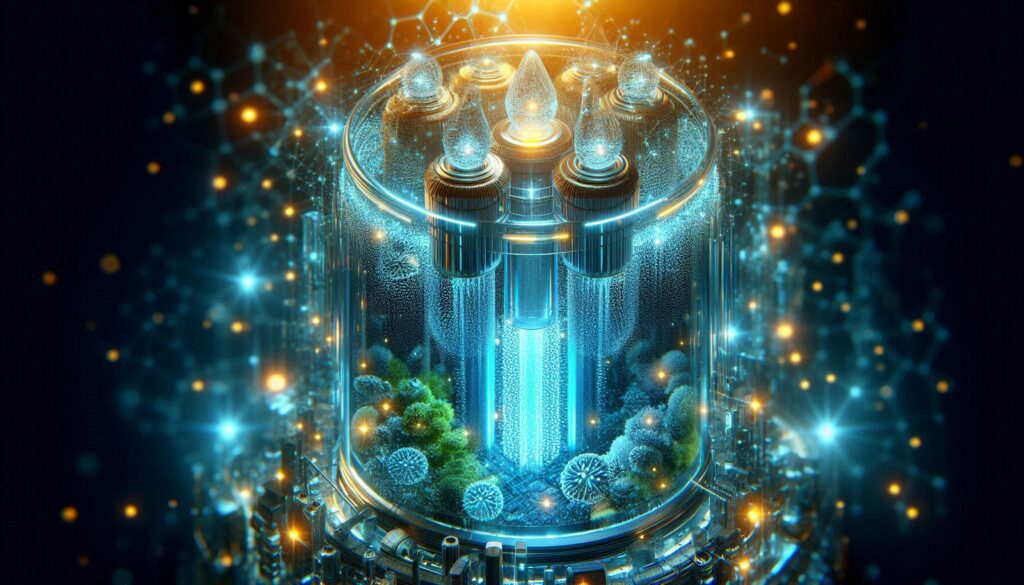Clean water—something most of us take for granted—is unfortunately a luxury for many around the world. As populations grow, industries expand, and pollution escalates, our existing water treatment systems are being pushed to their limits. Enter nanotechnology, a cutting-edge scientific innovation that is revolutionizing water purification. This isn’t just a buzzword; it’s a game-changing approach that can reshape how we think about and access clean water globally.
In this blog, we’ll dive into the fascinating world of nanotechnology, explore its transformative potential in water treatment, and discuss how Genviss is at the forefront of this exciting revolution.
What Exactly is Nanotechnology?
Let’s keep it simple. Nanotechnology is all about working with materials at the nanoscale—one-billionth of a meter. At this microscopic level, materials exhibit unique properties like enhanced reactivity, strength, and conductivity. Imagine a world where materials can filter out impurities so tiny that traditional methods would miss them entirely.
When applied to water purification, nanotechnology helps solve problems like removing heavy metals, organic pollutants, and even microorganisms that evade conventional systems. Think of it as taking water purification to superhero levels, where no contaminant is too small to escape.
The Role of Nanotechnology in Water Purification
1. Advanced Filtration with Nanomaterials
Nanotechnology introduces filtration systems that operate at an atomic level. Nanofiltration membranes are a shining example. These membranes allow water molecules to pass through while blocking salts, bacteria, and even viruses. They’re incredibly effective and require less energy compared to older methods like reverse osmosis.
This technology is particularly beneficial for treating wastewater and desalinating seawater. Cities with water scarcity issues are already turning to nanofiltration as a sustainable solution.
Many cities facing water shortages are adopting nanofiltration for desalination and wastewater recycling. You can read more about their efficiency from academic studies on nanofiltration.
2. Adsorbents for Targeted Contaminant Removal
Ever heard of graphene or carbon nanotubes? These materials are being used to trap harmful contaminants like lead, arsenic, and industrial pollutants. Their massive surface area allows them to capture more pollutants in less time, making water purification faster and more efficient.
For example, research published by the Journal of Nanotechnology Applications highlights how graphene oxide sheets are now being used to clean water supplies in remote areas
3. Photocatalytic Nanomaterials: Using Light to Purify Water
Photocatalysis might sound complex, but it’s essentially nanomaterials (like titanium dioxide) breaking down pollutants when exposed to sunlight. This process can destroy harmful bacteria, viruses, and even stubborn chemical toxins in water.
Regions with abundant sunlight are embracing this technology to make water treatment eco-friendly and sustainable.
4. Antimicrobial Nanoparticles: Nature’s Germ Killers
Silver nanoparticles, known for their natural antimicrobial properties, are being integrated into water purification systems. They effectively kill bacteria and viruses without requiring harsh chemical disinfectants.
Portable water filters infused with silver nanoparticles are now being distributed in disaster-hit areas, providing safe drinking water to those in need.
Why is Nanotechnology a Game-Changer?
Nanotechnology isn’t just another tool in our water purification toolbox; it’s rewriting the playbook entirely. Here’s why it’s such a big deal:
- Precision Like Never Before: Nanotechnology can target contaminants traditional methods miss, including pharmaceuticals and microplastics.
- Energy Efficiency: Processes powered by nanotechnology often require significantly less energy than older systems, making them more sustainable.
- Versatility: From personal water filters to industrial-scale treatment plants, nanotech works across the board.
- Cost-Effectiveness: While initial setup costs may be higher, the long-term savings in energy and maintenance make it a wise investment.
The Challenges We Need to Address
No great innovation comes without its hurdles, and nanotechnology is no exception:
- Environmental Concerns: The production and disposal of nanomaterials must be carefully managed to avoid ecological damage.
- High Production Costs: Although costs are decreasing, the initial research and development investments are substantial.
- Regulatory Uncertainty: As a relatively new technology, nanotech faces unclear regulatory frameworks in many regions.
At Genviss, we’re tackling these challenges head-on. By prioritizing sustainable materials and rigorous safety protocols, we’re ensuring that our nanotechnology solutions are as environmentally friendly as they are effective.
Genviss: Pioneering Nanotechnology in Water Treatment
Genviss has always believed in leveraging the best of technology to address global challenges. Here’s how we’re contributing to the nanotechnology revolution:
- Customized Solutions: Our team tailors nanotech-based purification systems for various needs, whether it’s industrial wastewater or portable water filters for emergency relief.
- Global Collaboration: We partner with leading research institutions and environmental organizations to stay ahead of the curve in nanotechnology innovation.
- Community Impact: Beyond big projects, we’re focusing on affordable, user-friendly solutions for underserved communities, ensuring that clean water is accessible to everyone.
The Road Ahead: What Does the Future Hold?
The possibilities for nanotechnology in water purification are virtually limitless. Imagine self-cleaning filters, nanobots monitoring water quality in real-time, and fully autonomous purification systems requiring zero human intervention.
In the coming years, advancements in nanotechnology could redefine global water security. At Genviss, we’re not just spectators in this revolution; we’re active participants, driving change one innovation at a time.
Final Thoughts
Water is life, and nanotechnology is helping us protect it like never before. While challenges remain, the benefits far outweigh the hurdles. With companies like Genviss leading the charge, we’re on the brink of a future where clean, safe water is a reality for everyone.
The next time you turn on your tap, take a moment to appreciate the science behind clean water—and imagine how far we can go with the power of nanotechnology.

